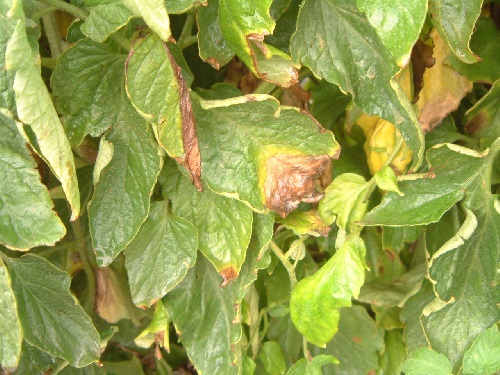Get Ready For Brown Marmorated Stink Bug In 2015

(Photo Credit: Chris Bergh, Virginia Tech)
Growers had better be on the lookout for brown marmorated stink bug (BMSB), as the pest’s population growth shows no sign of diminishing.
Just ask Joe Beaudoin, who grows nearly 90 acres of fruits and vegetables in Vancouver, WA, which he sells through his U-Pick operation and a retail outlet, Joe’s Place Farms. The city has developed around the farm over the years, making Beaudoin vulnerable to BMSB, which frequently hitchhikes on the nation’s roadways.
Even worse, Interstate 5 — the main route between Seattle and Portland, OR — is just 1,000 feet from the farm, and Portland International Airport is just 10 minutes away. All that made Joe’s Place easy pickinpickins for BMSB. In fact, he has the dubious distinction of being the first commercial farmer in the state of Washington to get invaded by BMSB.
Three years ago, in late season, the pests invaded a field of bell peppers. Beaudoin went from not seeing one to seeing them seemingly everywhere.
“All of a sudden, there were 10 on every pepper plant,” he says. “It seemed like they multiplied 3 or 4 times in just a few days.”
On To The Fruit
Beaudoin was able to get a handle on BMSB on his pepper, tomato, and pumpkin fields to a large degree by spraying pyrethroids such as Mustang Max and Brigade (both from FMC Corp). But in the past few years BMSB has invaded his berries and tree fruit including apples, peaches, plums and cherries.
The problem is using products such as pyrethroids and carbamates can ruin an Integrated Pest Management (IPM) Program, notes Peter Shearer, an Oregon State University entomologist who has worked with Beaudoin. Shearer is a member of the national team, Stop BMSB, which consists of 50 scientists from 10 universities and USDA.
Another member of the team, Chris Bergh of Virginia Tech, says growers who abandon their IPM programs end up faced with numerous other secondary pests. Using pyrethroids and carbamates can lead to outbreaks of wooly apple aphid, San Jose scale, and spider mites.
“Brown marmorated stink bug has turned that whole IPM program upside down,” he says. “My advice to growers would be to keep your program as soft as possible for as long as possible.”
Tough Fight Ahead
Though entomologists say it’s difficult to predict future pest pressures, both Bergh and Shearer say growers would be wise to get ready. Bergh says while this winter has been tough so far through much of the Eastern U.S., it’s not as cold as last year. And if there is another summer like the drought year of 2010, look out.
“If we encounter another hot and dry summer, growers can expect a robust population by the end of the season.”
Shearer can foresee a similar scenario in the West.
“It takes a while before these populations build up, and then they go to town. It’s going to get a lot worse, oh yes,” he says, noting BMSB has recently invaded Europe. “It’s turning into a global pest.”
The only long-term control is biological, says Shearer, noting it is controlled by a parasitic wasp in its native China. But releasing a new insect in the U.S. is extremely serious, and requires years of testing.
Read All About It
As for Beaudoin, he too thinks the pest is going to do a lot more damage before scientists can gain the upper hand, so he recommends that his fellow growers do their homework.
“It’s probably going to catch you by surprise, and if you’re completely unprepared, you’re in trouble,” he says. “Start researching it and finding out all you can about it before you start harvesting your crop and discover it’s damaged by the stink bug, and it’s too late.” ●









